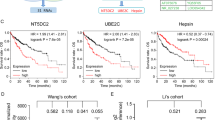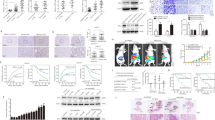Abstract
Yes-associated protein (YAP) is overexpressed and has an oncogenic role in hepatocellular carcinoma (HCC). However, whether membrane protein can serve not only as a tumor marker that reflects YAP function but also as a therapeutic target that stimulates tumorigenesis in HCC remains unknown. Here we report that the membrane protein melanoma cell adhesion molecule (MCAM) was under positive regulation by YAP and was highly elevated in HCC cells. Within the MCAM promoter, we found the presence of a cAMP Response Element (CRE; −32 to −25 nt), which is conserved among species and is essential for YAP- and CREB-dependent regulation. Moreover, the interaction between CREB and YAP at the CRE site was dependent on PTPIY–WW domain interactions. However, MCAM expression was low and could not be regulated by YAP in breast and colon cancer cells because of the low levels of the acetyltransferase p300. In HCC cells, high levels of p300 facilitated the binding of YAP to the MCAM promoter, which in turn enhanced histone acetylation and polymerase II recruitment through the dissociation of the deacetylase Sirt1. These results suggest that MCAM is an HCC-specific target of YAP. In clinical serum samples, we found that the serum levels of MCAM were highly elevated in patients with HCC compared with healthy controls and with patients with cirrhosis, hepatitis, colon cancer and breast cancer. MCAM levels were shown to be a slightly better indicator than serum alpha-fetoprotein for predicting HCC. We further demonstrated that MCAM is essential for the survival and transformation of HCC. Mechanistically, MCAM induced translation initiation and the transcriptional activities of c-Jun/c-Fos. In addition, AKT activation had an essential role in the MCAM-promoted binding of eukaryotic initiation factor 4E to c-Jun/c-Fos mRNA. In conclusion, we demonstrated that MCAM may be a potential tumor marker and therapeutic target for the diagnosis and treatment of HCC.
This is a preview of subscription content, access via your institution
Access options
Subscribe to this journal
Receive 50 print issues and online access
$259.00 per year
only $5.18 per issue
Buy this article
- Purchase on Springer Link
- Instant access to full article PDF
Prices may be subject to local taxes which are calculated during checkout












Similar content being viewed by others
References
Overholtzer M, Zhang J, Smolen GA, Muir B, Li W, Sgroi DC et al. Transforming properties of YAP, a candidate oncogene on the chromosome 11q22 amplicon. Proc Natl Acad Sci USA 2006; 103: 12405–12410.
Xu MZ, Yao TJ, Lee NP, Ng IO, Chan YT, Zender L et al. Yes-associated protein is an independent prognostic marker in hepatocellular carcinoma. Cancer 2009; 115: 4576–4585.
Camargo FD, Gokhale S, Johnnidis JB, Fu D, Bell GW, Jaenisch R et al. YAP1 increases organ size and expands undifferentiated progenitor cells. Curr Biol 2007; 17: 2054–2060.
Zhang N, Bai H, David KK, Dong J, Zheng Y, Cai J et al. The Merlin/NF2 tumor suppressor functions through the YAP oncoprotein to regulate tissue homeostasis in mammals. Dev Cell 2010; 19: 27–38.
Zhao B, Ye X, Yu J, Li L, Li W, Li S et al. TEAD mediates YAP-dependent gene induction and growth control. Genes Dev 2008; 22: 1962–1971.
Urtasun R, Latasa MU, Demartis MI, Balzani S, Goñi S, Garcia-Irigoyen O et al. Connective tissue growth factor autocriny in human hepatocellular carcinoma: oncogenic role and regulation by epidermal growth factor receptor/yes-associated protein-mediated activation. Hepatology 2011; 54: 2149–2158.
Li H, Wolfe A, Septer S, Edwards G, Zhong X, Abdulkarim AB et al. Deregulation of Hippo kinase signalling in human hepatic malignancies. Liver Int 2012; 32: 38–47.
Tschaharganeh DF, Chen X, Latzko P, Malz M, Gaida MM, Felix K et al. Yes-associated protein up-regulates Jagged-1 and activates the Notch pathway in human hepatocellular carcinoma. Gastroenterology 2013; 144: 1530–1542.
Lehmann JM, Holzmann B, Breitbart EW, Schmiegelow P, Riethmüller G, Johnson JP . Discrimination between benign and malignant cells of melanocytic lineage by two novel antigens, a glycoprotein with a molecular weight of 113,000 and a protein with a molecular weight of 76,000. Cancer Res 1987; 47: 841–845.
Wang Z, Yan X . CD146, a multi-functional molecule beyond adhesion. Cancer Lett 2013; 330: 150–162.
Wang J, Liu X, Wu H, Ni P, Gu Z, Qiao Y et al. CREB up-regulates long non-coding RNA, HULC expression through interaction with microRNA-372 in liver cancer. Nucleic Acids Res 2010; 38: 5366–5383.
Wang J, Ma L, Weng W, Qiao Y, Zhang Y, He J et al. Mutual interaction between YAP and CREB promotes tumorigenesis in liver cancer. Hepatology 2013; 58: 1011–1020.
Wang J, Wang H, Zhang Y, Zhen N, Zhang L, Qiao Y et al. Mutual inhibition between YAP and SRSF1 maintains long non-coding RNA, Malat1-induced tumourigenesis in liver cancer. Cell Signal 2014; 26: 1048–1059.
Yu W, Qiao Y, Tang X, Ma L, Wang Y, Zhang X et al. Tumor suppressor long non-coding RNA, MT1DP is negatively regulated by YAP and Runx2 to inhibit FoxA1 in liver cancer cells. Cell Signal 2014; 26: 2961–2968.
Wang J, Gu Z, Ni P, Qiao Y, Chen C, Liu X et al. NF-kappaB P50/P65 hetero-dimer mediates differential regulation of CD166/ALCAM expression via interaction with micoRNA-9 after serum deprivation, providing evidence for a novel negative auto-regulatory loop. Nucleic Acids Res 2011; 39: 6440–6455.
Sudol M . Newcomers to the WW domain-mediated network of the hippo tumor suppressor pathway. Genes Cancer 2010; 1: 1115–1118.
Servillo G, Della Fazia MA, Sassone-Corsi P . Coupling cAMP signaling to transcription in the liver: pivotal role of CREB and CREM. Exp Cell Res 2002; 275: 143–154.
Spencer VA, Davie JR . Role of covalent modifications of histones in regulating gene expression. Gene 1999; 240: 1–12.
Tse C, Sera T, Wolffe AP, Hansen JC . Disruption of higher-order folding by core histone acetylation dramatically enhances transcription of nucleosomal arrays by RNA polymerase III. Mol Cell Biol 1998; 18: 4629–4638.
Xue H, Qiao Y, Ni P, Wang J, Chen C, Huang GA . CRE that binds CREB and contributes to PKA-dependent regulation of the proximal promoter of human RAB25 gene. Int J Biochem Cell Biol 2011; 43: 348–357.
Bouras T, Fu M, Sauve AA, Wang F, Quong AA, Perkins ND et al. SIRT1 deacetylation and repression of p300 involves lysine residues 1020/1024 within the cell cycle regulatory domain 1. J Biol Chem 2005; 280: 10264–10276.
Strano S, Monti O, Pediconi N, Baccarini A, Fontemaggi G, Lapi E et al. The transcriptional coactivator Yes-associated protein drives p73 gene-target specificity in response to DNA Damage. Mol Cell 2005; 18: 447–459.
Iatropoulos MJ, Williams GM . Proliferation markers. Exp Toxicol Pathol 1996; 48: 175–181.
Yamaguchi K, Lantowski A, Dannenberg AJ, Subbaramaiah K . Histone deacetylase inhibitors suppress the induction of c-Jun and its target genes including COX-2. J Biol Chem 2005; 280: 32569–32577.
Bakiri L, Matsuo K, Wisniewska M, Wagner EF, Yaniv M . Promoter specificity and biological activity of tethered AP-1 dimers. Mol Cell Biol 2002; 22: 4952–4964.
Quan T, Qin Z, Xu Y, He T, Kang S, Voorhees JJ et al. Ultraviolet irradiation induces CYR61/CCN1, a mediator of collagen homeostasis, through activation of transcription factor AP-1 in human skin fibroblasts. J Invest Dermatol 2010; 130: 1697–1706.
Li G, Kalabis J, Xu X, Meier F, Oka M, Bogenrieder T et al. Reciprocal regulation of MelCAM and AKT in human melanoma. Oncogene 2003; 22: 6891–6899.
He L, Simmen FA, Mehendale HM, Ronis MJ, Badger TM . Chronic ethanol intake impairs insulin signaling in rats by disrupting Akt association with the cell membrane. Role of TRB3 in inhibition of Akt/protein kinase B activation. J Biol Chem 2006; 281: 11126–11134.
Scheper GC, Proud CG . Does phosphorylation of the cap-binding protein eIF4E play a role in translation initiation? Eur J Biochem 2002; 269: 5350–5359.
Sonenberg N, Hinnebusch AG . Regulation of translation initiation in eukaryotes: mechanisms and biological targets. Cell 2009; 136: 731–745.
Sonenberg N, Gingras AC . The mRNA 5′ cap-binding protein eIF4E and control of cell growth. Curr Opin Cell Biol 1998; 10: 268–275.
Li L, Wang J, Zhang Y, Zhang Y, Ma L, Weng W et al. MEK1 promotes YAP and their interaction is critical for tumorigenesis in liver cancer. FEBS Lett 2013; 587: 3921–3927.
Xiao W, Wang J, Ou C, Zhang Y, Ma L, Weng W et al. Mutual interaction between YAP and c-Myc is critical for carcinogenesis in liver cancer. Biochem Biophys Res Commun 2013; 439: 167–172.
Wang J, Park JS, Wei Y, Rajurkar M, Cotton JL, Fan Q et al. TRIB2 acts downstream of Wnt/TCF in liver cancer cells to regulate YAP and C/EBPα function. Mol Cell 2013; 51: 211–225.
Ma L, Wang J, Lin J, Pan Q, Yu Y, Sun F . Cluster of differentiation 166(CD166) regulated by phosphatidylinositide 3-Kinase (PI3K)/AKT signaling to exert its anti-apoptotic role via yes-associated protein (YAP) in liver cancer. J Biol Chem 2014; 289: 6921–6933.
Bardin N, Francès V, Combes V, Sampol J, Dignat-George F . CD146: biosynthesis and production of a soluble form in human cultured endothelial cells. FEBS Lett 1998; 421: 12–14.
Mills L, Tellez C, Huang S, Baker C, McCarty M, Green L et al. Fully human antibodies to MCAM/MUC18 inhibit tumor growth and metastasis of human melanoma. Cancer Res 2002; 62: 5106–5114.
Fan R, Kim NG, Gumbiner BM . Regulation of Hippo pathway by mitogenic growth factors via phosphoinositide 3-kinase and phosphoinositide-dependent kinase-1. Proc Natl Acad Sci USA 2013; 110: 2569–2574.
Zhang H, Wu S, Xing D . Inhibition of Aβ(25-35)-induced cell apoptosis by low-power-laser-irradiation (LPLI) through promoting Akt-dependent YAP cytoplasmic translocation. Cell Signal 2012; 24: 224–232.
Acknowledgements
This work was supported by the China National 973 Project (2012CB966904 and 20110402), the National Natural Science Foundation of China (81301689 and 81201884), the Yangfan Project of the Shanghai Committee of Science and Technology (14YF1412300), the Outstanding Youth Training Program of Tongji University (1501219080) and the Shanghai Tenth People’s Hospital Climbing Training Program (04.01.13024).
Author information
Authors and Affiliations
Corresponding authors
Ethics declarations
Competing interests
The authors declare no conflict of interest.
Additional information
Supplementary Information accompanies this paper on the Oncogene website
Supplementary information
Rights and permissions
About this article
Cite this article
Wang, J., Tang, X., Weng, W. et al. The membrane protein melanoma cell adhesion molecule (MCAM) is a novel tumor marker that stimulates tumorigenesis in hepatocellular carcinoma. Oncogene 34, 5781–5795 (2015). https://doi.org/10.1038/onc.2015.36
Received:
Revised:
Accepted:
Published:
Issue Date:
DOI: https://doi.org/10.1038/onc.2015.36
This article is cited by
-
Intestinal epithelium-specific Fut2 deficiency promotes colorectal cancer through down-regulating fucosylation of MCAM
Journal of Translational Medicine (2023)
-
ST6GAL1 inhibits metastasis of hepatocellular carcinoma via modulating sialylation of MCAM on cell surface
Oncogene (2023)
-
YAP ISGylation increases its stability and promotes its positive regulation on PPP by stimulating 6PGL transcription
Cell Death Discovery (2022)
-
CD146 increases stemness and aggressiveness in glioblastoma and activates YAP signaling
Cellular and Molecular Life Sciences (2022)
-
Characterization of novel neutralizing mouse monoclonal antibody JM1-24-3 developed against MUC18 in metastatic melanoma
Journal of Experimental & Clinical Cancer Research (2020)



